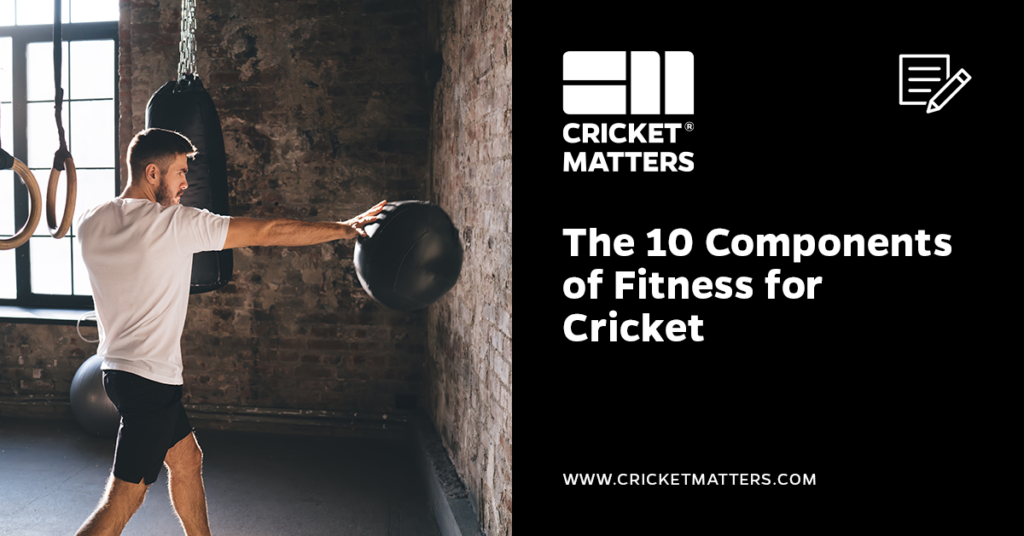
I hope you enjoy reading this blog post.
James Breese, Cricket Matters FounderIf you need my help with cricket coaching, strength and conditioning, injury rehab, or nutrition, click here.
In the world of professional cricket, every detail counts, and the physical attributes of players can significantly impact their performance on the field.
Height and weight are crucial as they influence a player’s agility, speed, and strength—key components for batting, bowling, and fielding.
In this blog, we dive into the reasons why maintaining an optimal physique is vital for cricketers and share our formula for calculating your perfect weight as a cricketer.
We will explore how different roles within the team may require specific physical traits and provide insights into how aspiring cricketers can achieve their physical best.
Whether you’re a club cricketer or an aspiring professional, this will help you understand the physical benchmarks that contribute to success in cricket and it’s one of the first things we look at when working with aspiring cricketers who want to perform better.
Table of Contents
The Ideal Weight Calculator for Cricketers
Here you go for those of you who want to skip the theory and take the test.
However, I’d recommend reading the rest of the blog afterwards.
Ideal Weight Calculator for Cricketers
The Importance of Physical Fitness in Cricket
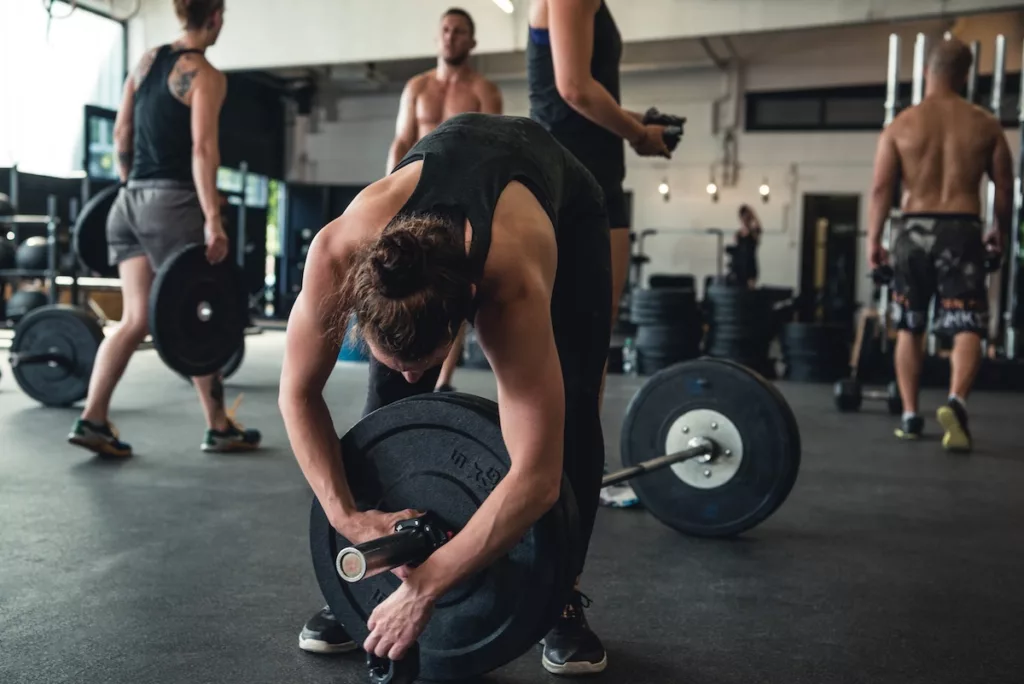
Physical fitness in cricket goes beyond mere strength and stamina; it fundamentally shapes how players perform under varied and demanding conditions of the game.
Height and weight, as integral components of a cricketer’s physical profile, play critical roles in determining their effectiveness in batting, bowling, and fielding.
They influence everything from the precision of a batsman’s stroke to a bowler’s rhythm and a fielder’s reach.
At the highest levels of the sport, this is vital. These one percent differences can effectively win or lose a game.
However, a cricketer’s fitness level impacts not only their physical capabilities but also their mental acuity.
Maintaining optimal fitness helps in sharpening focus, enhancing concentration, and managing stress during critical phases of the game.
It helps you make better decisions under pressure.
For batsmen, higher fitness levels contribute to better hand-eye coordination, endurance during long innings, and quicker reflexes against fast bowlers.
Bowlers benefit from fitness through improved strength and control, which are essential for maintaining speed and accuracy over extended spells.
Fielders require a blend of speed, agility, and endurance, all of which are sustained by high physical fitness standards.
A well-conditioned body is less prone to injuries.
Thus, at the highest levels of cricket, fitness is not only crucial for peak performance, but also for longevity in cricket.
The Role of Height in Cricket

Height significantly influences various aspects of cricketing performance, making it an asset across all disciplines of the game.
For batsmen, taller players can have a natural advantage due to their extended reach. This not only allows them to comfortably play shots that cover a greater area of the pitch but could also help in tackling high-bouncing balls more effectively.
The additional reach enables them to connect with deliveries that shorter batsmen might find challenging, offering them a broader shot selection, especially against spin bowlers where reach can alter the playing angles dramatically.
However, some of the greatest batsman to have ever played the game have been, shall we say, vertically challenged.
Sachin Tendulkar at 165cm, Brian Lara at 173cm (same height as me) and Ricky Ponting at 175cm spring to mind.
And in more recent times, Kane Williamson at 173cm, Virat Kohli at 175cm and David Warner at 171cm.
There is more to batting than just height, we understand that, and you need to look back at some of the greatest to have ever lived to paint a true picture.
However, we need to put things into context for the modern era.
The game is developing rapidly for the modern day batsmen, and the reality is, they appear to be getting taller.
In bowling, height is a critical factor that can enhance a player’s effectiveness.
Taller bowlers typically have longer limbs, allowing for a longer stride during their run-up and a higher release point when delivering the ball.
This elevated release not only increases the ball’s trajectory but can also add to the speed and bounce, making the delivery more challenging for the batsman to predict and react to.
The angle and the deception created by the bounce can complicate the batsman’s timing, thus increasing the bowler’s chances of securing a wicket.
Furthermore, in the fielding department, height provides distinct advantages.
Taller fielders have a better reach, which is crucial for catching high, lofted balls.
Their height enables them to cover more ground quickly, especially in the outfield where catching range can make the difference between stopping a boundary or allowing the ball to go through.
Height also contributes positively to the fielding side by intimidating batsmen, as taller fielders tend to throw the ball with more force from the boundary, often deterring batsmen from taking risky runs.
Overall, even though there are a number of short cricketers who have succeed at the highest level (Sachin Tendulkar) height enhances a cricketer’s ability to perform with more versatility and impact across all aspects of the game.
It brings a competitive edge that can be tactically exploited to the team’s advantage, making it an invaluable trait for players aiming for the highest levels of professional cricket.
The Role of Body Weight in Cricket
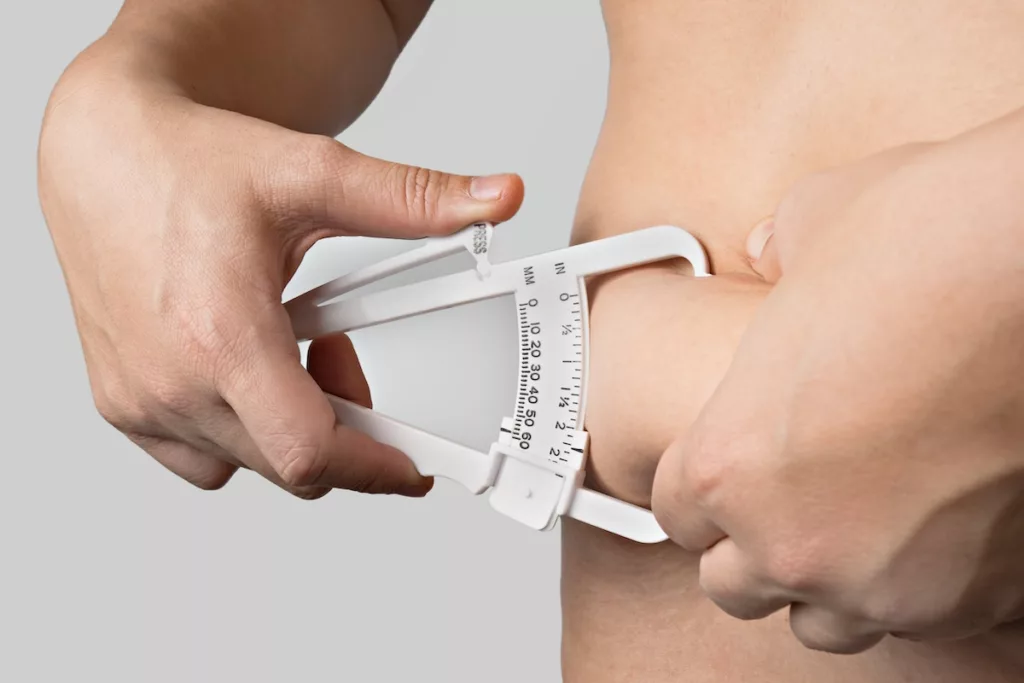
Managing body weight is crucial for cricketers, as it significantly affects a player’s agility, speed, power, endurance and decision making—five elements that are essential for excelling in this sport.
An optimal body weight helps players maintain a fine balance between muscle mass and fat, ensuring that they can move quickly and efficiently, whether it’s sprinting between the wickets or diving to stop a boundary.
Moreover, proper weight management is fundamental to building endurance, enabling players to sustain high levels of performance throughout long and demanding matches.
For batsmen, well-managed body weight contributes to both power and stamina.
Heavier muscle mass can enhance the force behind your bat swing, allowing you to hit the ball harder and further.
However, excessive body weight on batsmen can reduce their overall quickness at the crease, affecting their ability to steal quick singles or convert ones into twos.
Therefore, batsmen need to strike a balance to ensure their weight adds power without hindering their speed or their ability to endure long innings without fatigue.
Bowlers, particularly fast bowlers, benefit from maintaining a robust physique that supports their bowling action and helps sustain energy over long spells.
Weight contributes to a bowler’s ability to generate momentum and speed as they approach the crease, and a strong, well-conditioned body can absorb the repetitive stress of bowling, reducing the risk of injuries.
However, maintaining an optimal weight is also crucial for ensuring they do not tire quickly, allowing them to deliver fast, high-energy balls consistently throughout their overs.
For fielders, agility is paramount, and maintaining an optimal weight is key to achieving high levels of fielding performance.
Lighter body weight allows for quicker directional changes and faster speeds over short distances, crucial for fielders, especially in the inner circle.
At the same time, sufficient muscle mass ensures that throws from the boundary are strong and accurate, preventing extra runs and sometimes leading to critical run-outs.
Not to mention, proper weight management supports endurance, enabling fielders to maintain alertness and agility even towards the end of a gruelling day in the field.
Overall, effective weight management not only ensures that cricket players can endure the rigors of long matches—often played under varying climatic conditions—but also helps maintain peak physical and mental performance.
This management must be personalized, taking into account the player’s role within the team and their specific physical demands, to enhance their overall contribution to the game.
So that leads to the question of, what is the optimal height and weight for cricketers?
Well success leaves clues. Let me explain.
Analysing the Height and Weight of Elite Male Cricketers
Success in sports, particularly in cricket, often leave a trail of clues that aspiring players and club cricketers can follow.
By the physical traits of professional cricketers, we can uncover patterns and strategies that contribute to their high levels of success.
Understanding these factors is crucial for anyone looking to emulate or understand the components of success required at the highest levels of professional cricket.
The Ideal Height and Weight for Batsmen
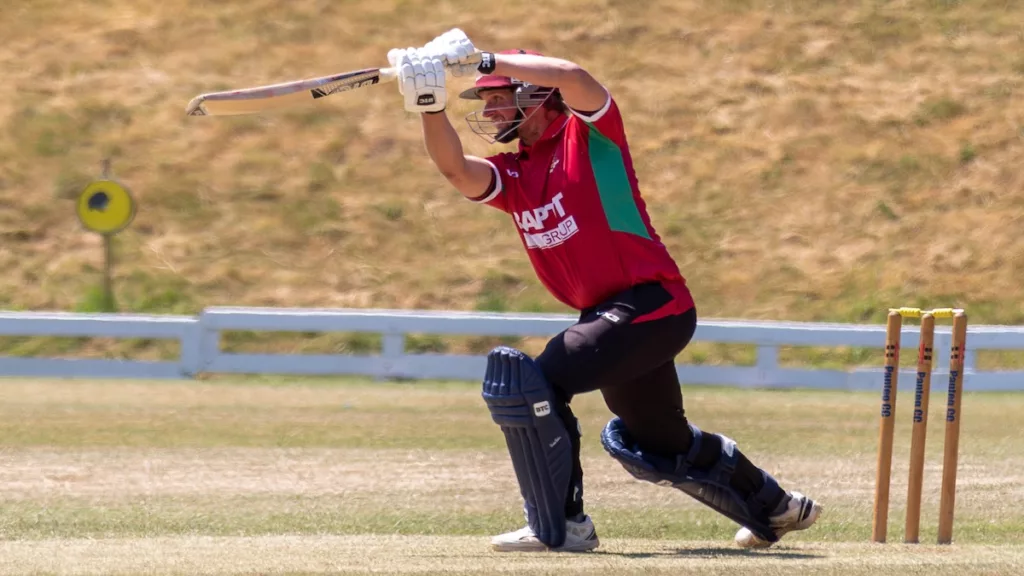
The evolution of cricket has not only seen changes in the style of play and technological advancements but also in the physical stature of the players themselves, particularly batsmen.
A systematic review in 2023 by Pote, Nicholls, King, and Christie provides a comprehensive analysis of the changes in anthropometric and morphological characteristics of elite male cricket batsmen over time.
According to the review, there has been a noticeable increase in the average height of elite batsmen from 179.80 cm in 1987 to 183.00 cm by 2021.
This gradual elevation in stature reflects broader trends in sports where increased height can provide a competitive advantage, such as better leverage in stroke play and improved reach.
The rise in average height over the decades may also be indicative of enhanced training plans and nutritional strategies that are focused on optimizing physical growth and performance.
In terms of weight, the review notes that elite batsmen have maintained a relatively leaner physique compared to bowlers, with an average weight of 79.02 kg.
This weight allows for greater agility and speed, crucial for quick single runs and sharp movements required during batting.
The leaner physique aligns with the demands of batting, where excessive weight could potentially hinder a batsman’s quickness and flexibility at the crease.
This trend towards taller and leaner profiles among elite batsmen over the years highlights a shift in the physical attributes that are considered beneficial for high performance in cricket.
It also suggests that current and aspiring batsmen may benefit from focusing on achieving an optimal balance of height and weight that supports both power and agility to excel at the professional level.
The Ideal Height and Weight for Male Bowlers
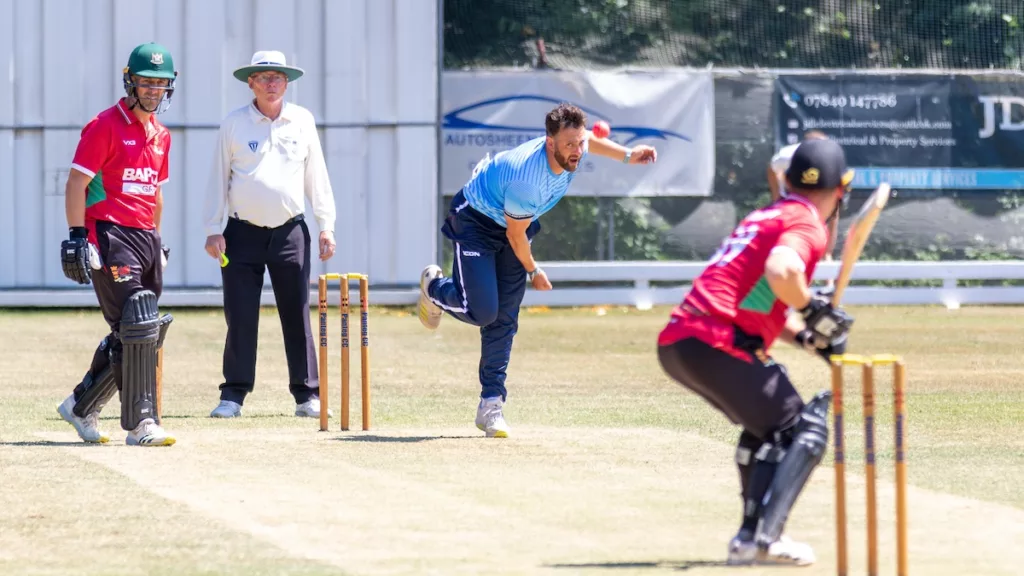
The physical demands on cricket bowlers, especially those playing at an elite level, have always been intense, necessitating a specific physique that can endure the rigors of fast bowling and deliver consistent performance.
According to the same study, elite bowlers have generally been taller and heavier than their batting counterparts, with a reported mean height of 185.64 cm.
This additional height provides bowlers, particularly fast bowlers, with a significant mechanical advantage.
A greater height allows for a longer stride, a higher release point, and the ability to generate more bounce on the ball, all of which can complicate the batsman’s ability to play the ball comfortably.
In terms of weight, the average for bowlers stood at 83.54 kg, indicating a robust build that supports their role.
This extra weight, particularly muscle mass, is crucial for bowlers as it adds to the power behind each delivery, enhances durability, and supports the high impact of bowling actions, which can be taxing on the body.
The robust build is particularly beneficial in absorbing the stresses associated with repetitive high-speed deliveries and reducing injury risks.
The findings from this study underscore the importance of a more substantial and taller physique for bowlers, highlighting an evolutionary trend influenced by advancements in physical conditioning and sports science.
These advances have not only helped bowlers increase their effectiveness but also contributed to their physical development, ensuring they can meet the physical demands of modern cricket.
This data suggests that aspiring elite bowlers should focus on achieving a physical stature that aligns with these evolving benchmarks—tall and lean, muscular frames that enable peak performance and resilience on the cricket field.
What About Fast Bowlers?
While the systematic review offered a general overview of the physical traits of elite bowlers, more specific studies shed light on the characteristics of fast bowlers.
A study conducted in Australia in 2007 by Stuelcken, Pyne, and Sinclair highlighted that male fast bowlers were approximately 1.88 meters tall and weighed around 87.9 kg.
This build reflects the necessity for both a commanding height and substantial body mass to generate high speeds and maintain stability during the bowling run-up and delivery.
Conversely, another study titled “Physical profiling of international cricket players” in 2020 presented somewhat different findings, reporting that male fast bowlers had an average height of 179.73 cm and weighed approximately 73.64 kg.
These specific insights into fast bowlers underline the diversity in physical profiles depending on the bowling style and the evolving standards in cricket fitness and performance, highlighting the importance of tailored physical development to meet the specific demands of fast bowling.
Analyzing The Height and Body Weight of Elite Female Cricketers
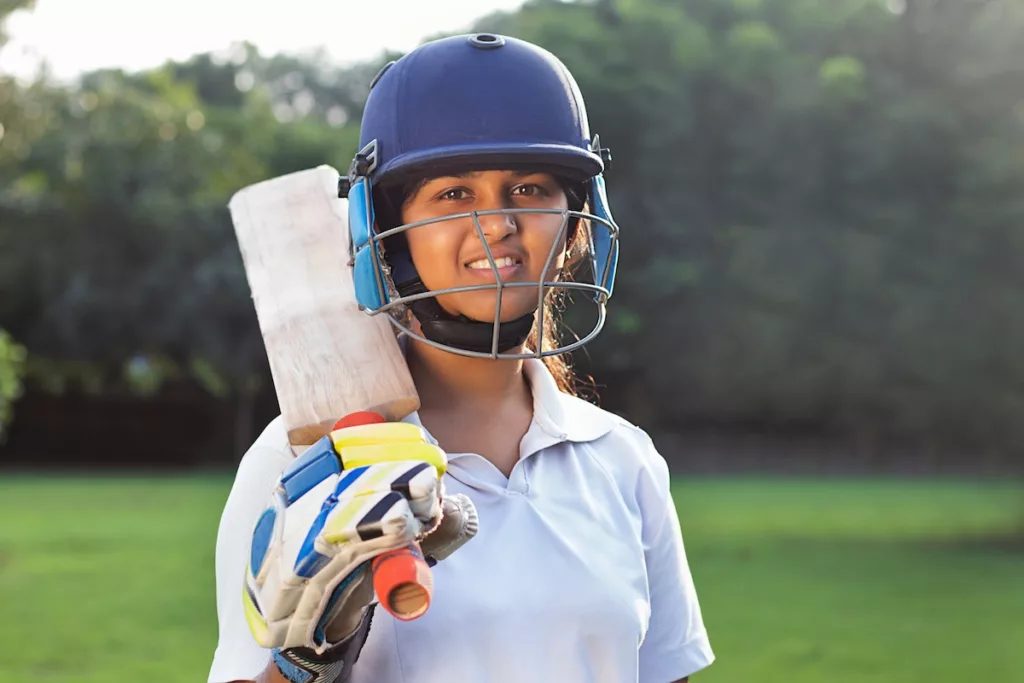
While the physical attributes of top international female cricketers are crucial, detailed data on the ideal height and weight for batswomen is currently sparse.
As the women’s game continues to professionalize and gather more interest, it is expected that more comprehensive data will become available.
This will help in understanding how physical attributes can be optimized for performance at the elite level.
For female bowlers, some data exists regarding their physical attributes.
A study conducted in 2007 on elite Australian female cricket fast bowlers found an average height of 1.71 meters and an average body mass of 66.2 kg.
These anthropometric profiles serve as a preliminary reference for player selection and training program development, however the data is over 15 years old and the game has moved on significantly.
As the professional women’s cricket landscape evolves, more specific and diverse data will likely emerge, aiding in the refinement of training and development programs for female cricketers.
However, we do have a potential formula for this, so keep reading.
Understanding Body Composition in Cricket

While height and body weight are commonly discussed metrics in evaluating an athlete’s physical attributes, understanding body composition provides a more nuanced and comprehensive picture.
This metric, which includes the analysis of body fat percentage and lean body mass, reveals the intricate balance between these components and their impact on a player’s performance.
In cricket, where agility, endurance, and power are crucial, analyzing body composition helps identify the optimal physical makeup for absolute performance.
Therefore, when looking at the physical attributes of cricketers we call this the holy trinity of:
- Height
- Weight and
- Body Fat Percentage
Why Body Composition Matters More Than Weight
While height and weight provide a basic understanding of a player’s physical stature, body composition—specifically body fat percentage and lean body mass—is a more critical metric in sports performance.
Body composition analysis helps to distinguish between fat and muscle mass, providing a clearer picture of an athlete’s fitness and functional capabilities.
For cricketers, having a lower body fat percentage and higher lean muscle mass can significantly enhance agility, speed, and power, crucial elements for peak performance.
In sports like the NFL, where athlete fitness is highly scrutinized, it’s been observed that players with a higher body fat percentage tend to exhibit reduced athletic performance and an increased risk of injuries.
The same principles apply to cricket, where agility and endurance are essential. Excess body fat can hinder a player’s mobility, speed, and stamina, ultimately impacting their performance negatively.
Moreover, carrying unnecessary weight can strain the body, particularly the joints and muscles, increasing the likelihood of injuries.
Ideal body fat percentages vary by sport and gender.
For male cricketers, an optimal body fat range is typically between 10 to 14%, which balances the need for muscle mass with agility and endurance.
For female cricketers, a slightly higher range of 18 to 22% is considered ideal.
These ranges help ensure that players have enough muscle mass to perform effectively while minimizing fat that could impede their performance.
Future Trends: Will Cricketers Follow the Path of Professional Footballers?

I am a big fan at looking at other sports to help predict and assist in our decision-making processes to create the ultimate cricket athlete.
Look at the data below from some of the past FIFA football World Cups for men:
| Height (cm) | 2002 | 2006 | 2018 |
| Overall Average (All Positions) | 180.77 | 181.4 | 182.4 |
| Goalkeeper | 186.42 | 187.75 | 188.8 |
| Defender | 181.71 | 182 | 183.2 |
| Midfielder | 178.25 | 178.74 | 179.7 |
| Forward | 180.01 | 180.66 | 181.4 |
| Weight (kg) | 2002 | 2006 | 2018 |
| Overall Average (All Positions) | 75.88 | 76.36 | 77.2 |
| Goalkeeper | 81.73 | 83.47 | 83.4 |
| Defender | 76.96 | 76.7 | 78 |
| Midfielder | 73.12 | 73.85 | 74 |
| Forward | 75.19 | 75.33 | 76.8 |
Unfortunately, the data remains sparse for women, however, there is some anthropometric data from past Olympic games as an overall average which I believe corelates well with the type of female cricketing athlete we’re trying to create.
Remember, success from other sports leaves clues:
| Height (cm) | Weight (kg) | |
| 2012 Olympic Female Football Players | 166.9 | 61.3 |
| Average of ALL Female Olympians (2012) | 170.2 | 63.2 |
| 2016 Olympic Female Football Players | 168 | 61.1 |
| Average of ALL Female Olympians (2016) | 170 | 62.6 |
This data provides some incredible insights we can’t ignore.
We can now start using mathematical models to make more informed decisions about our athletes.
What the Height and Weight Data of Professional Footballers Tells Us
Based on the information provided in the tables detailing the average heights and weights of male elite footballers across various positions and years (2002, 2006, and 2018), we can extract a simple formula to estimate an “ideal” weight for these athletes.
The proposed formula for men: Weight (kg) = Height (cm) − 105
This was evaluated by comparing its predictions against the actual recorded weights of male players.
The analysis revealed that this straightforward calculation closely approximates actual weights, with most deviations within about one kilogram.
A simple example of this would be a male footballer who is 180cm would have an estimated ideal weight of approximately 75kg.
What about the women?
Based on the analysis of height and weight data from female Olympic athletes, including football players, from the 2012 and 2016 games, we have developed a simple formula to estimate the “ideal” weight for female athletes.
The formula for women: Weight (kg) = Height (cm) − 107
This is derived by examining the average difference between heights and weights across different athlete categories.
This straightforward equation provides a practical method for quickly estimating a female athlete weight based solely on her height.
A simple example of this would be a female footballer who is 170cm would have an estimated ideal weight of approximately 63kg.
Although the formula isn’t perfect, it serves as a practical and easy-to-use tool for estimating suitable body mass in a sports setting, specifically for professional footballers.
For coaches and trainers needing quick assessments of player fitness relative to height, this formula offers a valuable reference point, highlighting how simple mathematical models can be effectively applied in sports science to inform decisions on athlete health and performance.
How to Calculate Your Ideal Cricketing Weight
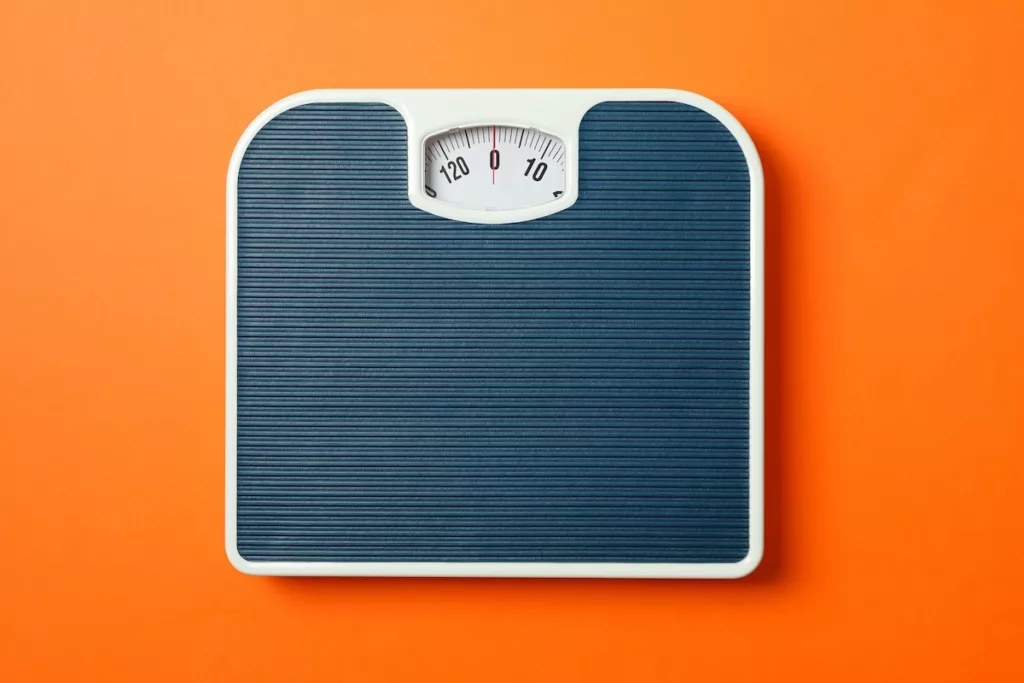
Cricket, like football, requires athletes to maintain a physique that optimizes performance without compromising agility and stamina. By adapting simple formulas used in football, cricketers can estimate an ideal weight range that supports their playing style and physical demands of their roles.
Ideal Weight Formula for Male Cricketers
For male cricketers, a straightforward formula to estimate the “ideal” playing weight can be derived similarly to that used for footballers. The formula:
Weight (kg) = Height (cm) – 105
For example, a cricketer who is 180 cm tall would have an estimated ideal weight of approximately 75 kg.
Ideal Weight Formula for Female Cricketers
For female cricketers, the formula is slightly adjusted to account for differences in body composition and athletic requirements:
Weight (kg) = Height (cm) – 107
For instance, a female cricketer who is 170 cm tall would have an ideal weight of about 63 kg.
Application and Benefits for Cricketers and Coaches
These formulas serve as valuable tools for coaches, trainers, and athletes themselves to assess and fine-tune physical preparation for competitive cricket.
By understanding their ideal height and weight, cricketers can tailor their training and nutrition plans more effectively, aiming to achieve a body composition that enhances performance and reduces injury risk.
Using such straightforward calculations allows for immediate adjustments and can be a starting point for more in-depth analysis with professional health and sports science support.
While not perfect, these estimates help create benchmarks for individual athletes and teams to aspire toward, ensuring that each player is at their physical best to meet the demands of modern cricket.
This approach underscores the importance of integrating simple mathematical models into sports science, providing a quick reference that aids decisions on athlete health, performance, and overall team strategy.
Final Thoughts: The Perfect Height and Weight of Cricket Players
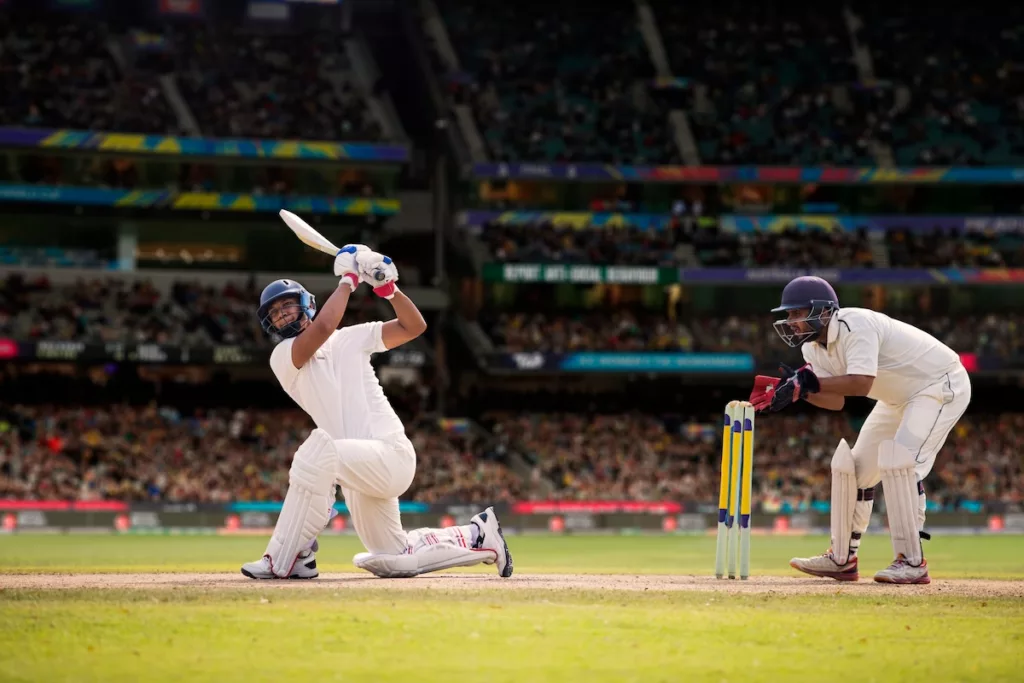
To play at the highest levels of professional cricket, the physical attributes of players, including height and weight, and body composition, play a pivotal role in determining their performance and longevity in the sport.
Throughout this article, we’ve explored how these elements influence a player’s agility, speed, strength, and overall capability on the field.
From the natural advantage that height provides batsmen in covering more of the pitch to the balance of muscle mass and agility that optimal weight affords, it’s clear that every physical detail counts.
However, while physical traits are important, they must be considered alongside skill and mental prowess.
The ability to remain focused under pressure, the skill to execute game plans, and the mental acuity to adapt during crucial phases of play are equally vital.
Therefore, players and coaches should strive for a balance—focusing not only on achieving the ideal physical standards but also on honing skills that make a complete cricketer.
As we look to the future, drawing parallels from sports like football, we can anticipate that the physical standards in cricket will continue to evolve.
This evolution will likely mirror advancements in sports science, leading to cricketers who are not only physically optimized but also extensively skilled and tactically aware.
For aspiring cricketers and coaches, it is crucial to utilize the insights and recommendations discussed, such as the simple formulas for calculating ideal weight and understanding the significance of body composition.
These tools and knowledge can guide training and development, ensuring that players are physically prepared to meet the demands of modern cricket.
By embracing both the science of physical fitness and the art of cricketing skill, players can elevate their game to new heights, achieving success and sustainability in their cricketing careers.
Remember, while the perfect physique, or height and weight can provide a competitive edge, it is the mastery of skill and mental resilience that often defines the legends of the game.
Further Reading
FAQs
What Formula Can Be Used to Calculate the Ideal Weight for Male Cricketers?
A formula for estimating the ideal weight for male cricketers is Weight (kg) = Height (cm) – 105
What Formula Can Be Used to Calculate the Ideal Weight for Female Cricketers?
For female cricketers, a simple formula for estimating their ideal weight is Weight (kg) = Height (cm) – 107
How Does a Cricketer’s Height Impact Their Performance?
A cricketer’s height can significantly impact their performance, particularly for bowlers. Taller bowlers can deliver balls with higher bounce and potentially more speed, affecting a batsman’s response time and shot selection. Conversely, shorter cricketers may have advantages in batting technique, agility, and quick movements.
How Does Body Composition Affect a Cricketer’s Performance?
Body composition directly influences a cricketer’s performance by affecting their speed, agility, strength, and stamina. Optimal muscle mass and minimal excess fat can enhance performance, especially in skills that require quick reflexes and sustained energy, like fielding and running between the wickets.
What is the Average Weight of a Cricket Player?
The average weight of a male cricket player varies by role. Elite batsmen, who have seen an increase in average height from 179.80 cm in 1987 to 183.00 cm in 2021, typically weigh around 79.02 kg. Bowlers, generally taller, have an average height of 185.64 cm and weigh about 83.54 kg.


